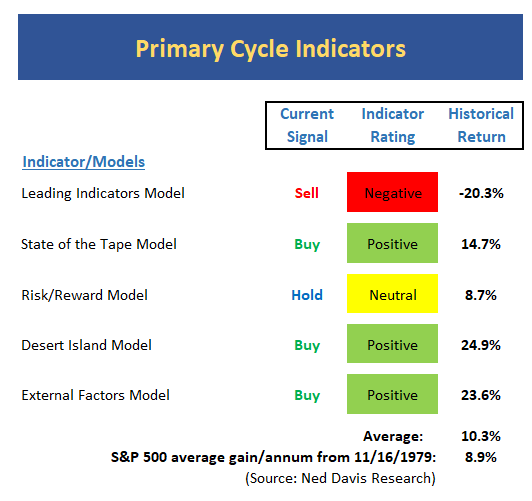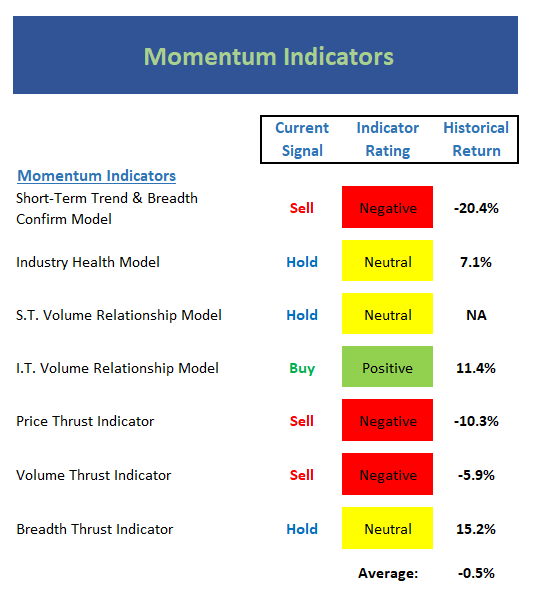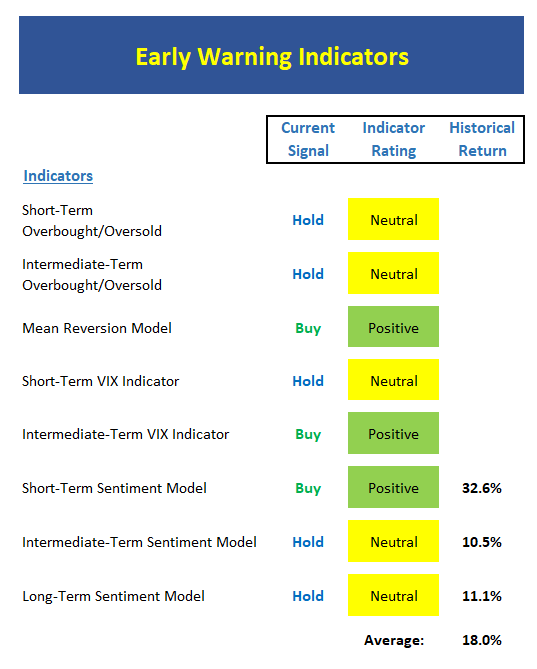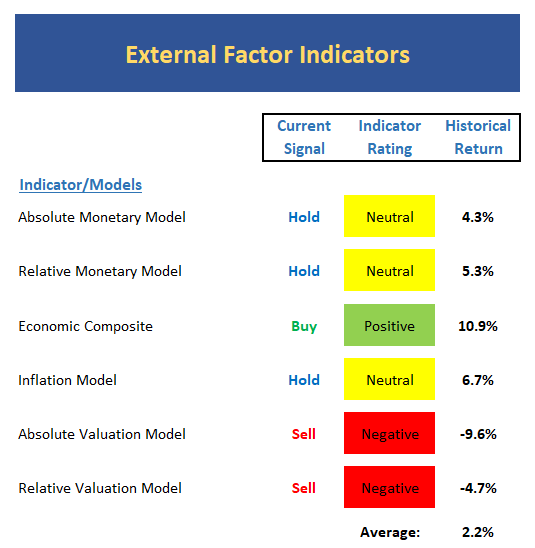Best to "Ride it Out" (For Now)
There can be no denying that there are issues for traders to wring their hands over here. The possibility of a trade war with China is front and center, which, most assuredly, will go beyond tariffs and include items such as currency devaluation, a reduction in U.S. bond buying, etc.
Next is something affectionately referred to as the latest iteration of a "tech wreck." Concerns over privacy and regulation are hitting names such as Facebook (NYSE: FB) and Alphabet (NASDAQ: GOOGL). And the pullback in the high fliers is, of course, spilling over into the rest of the sector.
Then there are the worries about the economy, the Fed, inflation, etc. Economists note that the latest batch of data on the economy has come in on the punk side, with Friday's Jobs report being a poster child for the theme. Some analysts worry that one of the primary underpinnings for the bull case - synchronized global economic growth - may be faltering.
Then when you factor in the fact that the algos are in control of the game here and the potential weekend headline risk over trade, well, Friday happens.
To be sure, the bulls (and the market technicals) have taken a hit. And some argue that our heroes in horns are wobbling here. However, I believe we are experiencing what is called a news-driven environment (aka a "bad news panic"). And yes fans, we have seen this before. One need look no further than the adventures with Greece and the European Debt Crisis to see how this game is played.
What I've learned about this type of environment is that it generally pays to "do less" when the headlines are driving the tape. Algos react to every news event with fervor, but at the same time, they don't tend to have much of a memory from one day to the next. As such, the overriding objective is to try and stay on the correct side of the prevailing market cycle and "ride it out."
This is not to say that a bear market couldn't develop. For example, two of my favorite Primary Cycle models have issued sell signals recently. This alone tells me to stay alert and be on the lookout for a change in the environment.
But for now at least, the "State of the Tape" and "Desert Island" models remain positive. Therefore, my take is that while the tape is clearly fraying at the edges, the bull trend has yet to break down.
Finally, I'll be paying close attention to both the earnings parade and the bond market in the coming weeks as I believe both will be important inputs. For the record, the bond market action has been unusual during this corrective phase as the "flight to safety" move that usually occurs during times of market stress hasn't materialized to the degree that would be expected.
As for the earnings season, EPS for S&P 500 is expected to grow by 15-18% over the year-ago period. However, this "good news" has likely already been baked into the cake for some time. So, disappointments and outlook commentary that is less than stellar could be punished while outperformance could go unrewarded. Stay tuned as the "narrative" from the earnings parade should play in important role at this juncture.
Thought For The Day:
A person often meets his destiny on the road he took to avoid it. - Jean de La Fontaine
Wishing you green screens and all the best for a great day,

David D. Moenning
Founder, Chief Investment Officer
Heritage Capital Research
HCR Focuses on a Risk-Managed Approach to Investing
Must Read: What Risk Management Can and Cannot Do
HCR's Financial Advisor Services
HCR's Individual Investor Services
Questions, comments, or ideas? Contact Us
At the time of publication, Mr. Moenning held long positions in the following securities mentioned: GOOGL - Note that positions may change at any time.
The State of the Big-Picture Market Models
It's a new week, so let's start things off with a review of the state of my favorite big-picture market models, which are designed to tell us which team is in control of the prevailing major trend.

View My Favorite Market Models Online
Executive Summary:
- The long-term Leading Indicators model flashed a sell signal last week. Since this model did a fine job in "calling" the 2015-16 "mini" bear, this development is worth keeping an eye on and further heightens the risk of the current skirmish morphing into something more serious.
- However, the "State of the tape" model remains in good shape due to the model's "mean reversion" components. This tells us that the majority of stocks remain technically healthy at this point in the game.
- Although the Risk/Reward model remains on sell signal, the model improved to neutral last week.
- My "desert island" model tells us to give the bulls the benefit of any doubt and to lean bullish.
- The External Factors model remains positive - but only by the slimmest of margins.
- In sum, while the action has been very sloppy lately and there are several issues for traders to fret over, the Primary Cycle board suggests that we should continue to stay seated on the bull train.
The State of the Trend
Digging into the details, I like to start my weekly review with a look at the "state of the trend." These indicators are designed to give us a feel for the overall health of the current short- and intermediate-term trend models.

View Trend Indicator Board Online
Executive Summary:
- Friday's freak-out over what could happen relating to trade and the economy, caused the short-term trend to slip back to negative. However, a reversal of Friday's move would improve the rating.
- Since the stock market is in a mean-reverting mode, a short-term buy signal was triggered on 4/3 at S&P 2614. A break below 2553 would flip the signal to a sell.
- The intermediate-term Trend Model remains negative. A weekly close above 2745(ish) would change the signal to positive.
- The intermediate-term Channel Breakout System remains on a sell signal and would require a move above 2800 to change to green.
- The long-term Trend Model remains positive and continues to suggest that this is a bull market until proven otherwise.
- The Cycle Composite points higher for the first half of the month.
- From an intermediate-term perspective, the market remains in a mean-reverting mode.
- In sum, the current trend appears to be low neutral. And as long as the recent lows are not exceeded, I could argue that we're seeing a basing pattern unfold.
The State of Internal Momentum
Next up are the momentum indicators, which are designed to tell us whether there is any "oomph" behind the current trend.

View Momentum Indicator Board Online
Executive Summary:
- The short-term Trend and Breadth Confirm Model has been in flip-flop mode for some time now. As such, it should be surprising to see the model "flop" back to negative after Friday's shellacking.
- If you are looking for positives, I believe it is good news that the Industry Health Model remains in the neutral zone.
- It is also modestly encouraging that the he short-term Volume Relationship model starts the week with a neutral reading. From my perch, this remains an important "tell" about the next intermediate-term move. But so far at least, the model is dead neutral.
- The intermediate-term Volume Relationship Model remains positive. However, the "demand volume" line is starting to get dangerously close to breaking down.
- Although there was some improvement last week, the intermediate-term Price Thrust Indicator remains negative zone to start the week.
- The Volume Thrust Indicator remains negative.
- The Breadth Thrust Indicator actually improved a bit last week and is now rated neutral. Another modest positive.
The State of the "Trade"
We also focus each week on the "early warning" board, which is designed to indicate when traders might start to "go the other way" -- for a trade.

View Early Warning Indicator Board Online
Executive Summary:
- Unfortunately, the oversold tailwind is not blowing as strong as it was last week.
- Same story when we look at the market from an intermediate-term. Stocks were oversold to a degree that a bounce could ensue, but the extreme oversold reading has since been worked off.
- The Mean Reversion Model flashed a buy signal at the end of the week.
- The short-term VIX indicator remains on the 3/26 buy signal. However, this system is quickly approaching the sell zone.
- Our longer-term VIX Indicator remains on a buy signal.
- From a short-term perspective, market sentiment has reached the lowest reading (which is positive) since late 2016.
- The intermediate-term Sentiment Model has improved to neutral.
- The Long-Term Sentiment Model improved to neutral last week.
- The Early Warning board now suggests that the table has been set for the bulls but they now need to do something with it.
The State of the Macro Picture
Now let's move on to the market's "external factors" - the indicators designed to tell us the state of the big-picture market drivers including monetary conditions, the economy, inflation, and valuations.

View External Factors Indicator Board Online
Executive Summary:
- The Absolute Monetary model fell to the lowest end of neutral - but has refused to issue a sell signal. I continue to monitor this model closely.
- The Relative Monetary Model improved to neutral - albeit by a slim margin. My guess is it was the "flight to safety" that triggered the improvement in the model. But we shall see.
- Our Economic Models suggest that the economic backdrop continues to be in good shape.
- The inflation model remains neutral and argues that we need to remain on the lookout for a rise in inflationary pressures.
- The Absolute Valuation model remains negative but has improved. And with the E expected to grow at 17-18%, we could see further improvement in the market valuations.
- Our Relative Valuation Model is also negative as rates can no longer trump the levels of valuation.
Sample Tactical Allocation Model
Below is an EXAMPLE (and ONLY an EXAMPLE) of how one might incorporate the indicator boards. The approach shown below is designed to provide the current equity allocation for a balanced tactical asset allocation model with a base target of 60/40 stocks/bonds.
The overall intent of the model is to keep equity exposure in line with current conditions. Since the model is updated monthly, we take a longer-term approach and allocate 40% of the exposure to Environmental factors, 40% to Trend and Momentum factors, and 20% to Sentiment.

The model above is for illustrative and informational purposes only and does not in any way represent any investment recommendation. The model is merely a sample of how indicators can be grouped to create a guide to market exposure based on the inputs from multiple indicators/models.
Beginning February 2018, the model will be updated monthly.
Indicators Explained
Short-Term Trend-and-Breadth Signal Explained: History shows the most reliable market moves tend to occur when the breadth indices are in gear with the major market averages. When the breadth measures diverge, investors should take note that a trend reversal may be at hand. This indicator incorporates NDR's All-Cap Dollar Weighted Equity Series and A/D Line. From 1998, when the A/D line is above its 5-day smoothing and the All-Cap Equal Weighted Equity Series is above its 25-day smoothing, the equity index has gained at a rate of +32.5% per year. When one of the indicators is above its smoothing, the equity index has gained at a rate of +13.3% per year. And when both are below, the equity index has lost +23.6% per year.
Channel Breakout System Explained: The short-term and intermediate-term Channel Breakout Systems are modified versions of the Donchian Channel indicator. According to Wikipedia, "The Donchian channel is an indicator used in market trading developed by Richard Donchian. It is formed by taking the highest high and the lowest low of the last n periods. The area between the high and the low is the channel for the period chosen."
Intermediate-Term Trend-and-Breadth Signal Explained: This indicator incorporates NDR's All-Cap Dollar Weighted Equity Series and A/D Line. From 1998, when the A/D line is above its 45-day smoothing and the All-Cap Equal Weighted Equity Series is above its 45-day smoothing, the equity index has gained at a rate of +17.6% per year. When one of the indicators is above its smoothing, the equity index has gained at a rate of +6.5% per year. And when both are below, the equity index has lost -1.3% per year.
Industry Health Model Explained: Designed to provide a reading on the technical health of the overall market, Big Mo Tape takes the technical temperature of more than 100 industry sectors each week. Looking back to early 1980, when the model is rated as "positive," the S&P has averaged returns in excess of 23% per year. When the model carries a "neutral" reading, the S&P has returned over 11% per year. But when the model is rated "negative," stocks fall by more than -13% a year on average.
Cycle Composite Projections: The cycle composite combines the 1-year Seasonal, 4-year Presidential, and 10-year Decennial cycles. The indicator reading shown uses the cycle projection for the upcoming week.
Trading Mode Indicator: This indicator attempts to identify whether the current trading environment is "trending" or "mean reverting." The indicator takes the composite reading of the Efficiency Ratio, the Average Correlation Coefficient, and Trend Strength models.
Volume Relationship Models: These models review the relationship between "supply" and "demand" volume over the short- and intermediate-term time frames.
Price Thrust Model Explained: This indicator measures the 3-day rate of change of the Value Line Composite relative to the standard deviation of the 30-day average. When the Value Line's 3-day rate of change have moved above 0.5 standard deviation of the 30-day average ROC, a "thrust" occurs and since 2000, the Value Line Composite has gained ground at a rate of +20.6% per year. When the indicator is below 0.5 standard deviation of the 30-day, the Value Line has lost ground at a rate of -10.0% per year. And when neutral, the Value Line has gained at a rate of +5.9% per year.
Volume Thrust Model Explained: This indicator uses NASDAQ volume data to indicate bullish and bearish conditions for the NASDAQ Composite Index. The indicator plots the ratio of the 10-day total of NASDAQ daily advancing volume (i.e., the total volume traded in stocks which rose in price each day) to the 10-day total of daily declining volume (volume traded in stocks which fell each day). This ratio indicates when advancing stocks are attracting the majority of the volume (readings above 1.0) and when declining stocks are seeing the heaviest trading (readings below 1.0). This indicator thus supports the case that a rising market supported by heavier volume in the advancing issues tends to be the most bullish condition, while a declining market with downside volume dominating confirms bearish conditions. When in a positive mode, the NASDAQ Composite has gained at a rate of +38.3% per year, When neutral, the NASDAQ has gained at a rate of +13.3% per year. And when negative, the NASDAQ has lost at a rate of -8.5% per year.
Breadth Thrust Model Explained: This indicator uses the number of NASDAQ-listed stocks advancing and declining to indicate bullish or bearish breadth conditions for the NASDAQ Composite. The indicator plots the ratio of the 10-day total of the number of stocks rising on the NASDAQ each day to the 10-day total of the number of stocks declining each day. Using 10-day totals smooths the random daily fluctuations and gives indications on an intermediate-term basis. As expected, the NASDAQ Composite performs much better when the 10-day A/D ratio is high (strong breadth) and worse when the indicator is in its lower mode (weak breadth). The most bullish conditions for the NASDAQ when the 10-day A/D indicator is not only high, but has recently posted an extreme high reading and thus indicated a thrust of upside momentum. Bearish conditions are confirmed when the indicator is low and has recently signaled a downside breadth thrust. In positive mode, the NASDAQ has gained at a rate of +22.1% per year since 1981. In a neutral mode, the NASDAQ has gained at a rate of +14.5% per year. And when in a negative mode, the NASDAQ has lost at a rate of -6.4% per year.
Short-Term Overbought/sold Indicator: This indicator is the current reading of the 14,1,3 stochastic oscillator. When the oscillator is above 80 and the %K is above the %D, the indicator gives an overbought reading. Conversely, when the oscillator is below 20 and %K is below its %D, the indicator is oversold.
Intermediate-Term Overbought/sold Indicator: This indicator is a 40-day RSI reading. When above 57.5, the indicator is considered overbought and when below 45 it is oversold.
Mean Reversion Model: This is a diffusion model consisting of five indicators that can produce buy and sell signals based on overbought/sold conditions.
VIX Indicator: This indicator looks at the current reading of the VIX relative to standard deviation bands. When the indicator reaches an extreme reading in either direction, it is an indication that a market trend could reverse in the near-term.
Short-Term Sentiment Indicator: This is a model-of-models composed of 18 independent sentiment indicators designed to indicate when market sentiment has reached an extreme from a short-term perspective. Historical analysis indicates that the stock market's best gains come after an environment has become extremely negative from a sentiment standpoint. Conversely, when sentiment becomes extremely positive, market returns have been subpar.
Intermediate-Term Sentiment Indicator: This is a model-of-models composed of 7 independent sentiment indicators designed to indicate when market sentiment has reached an extreme from an intermediate-term perspective. Historical analysis indicates that the stock market's best gains come after an environment has become extremely negative from a sentiment standpoint. Conversely, when sentiment becomes extremely positive, market returns have been subpar.
Long-Term Sentiment Indicator: This is a model-of-models composed of 6 independent sentiment indicators designed to indicate when market sentiment has reached an extreme from a long-term perspective. Historical analysis indicates that the stock market's best gains come after an environment has become extremely negative from a sentiment standpoint. Conversely, when sentiment becomes extremely positive, market returns have been subpar.
Absolute Monetary Model Explained: The popular cliché, "Don't fight the Fed" is really a testament to the profound impact that interest rates and Fed policy have on the market. It is a proven fact that monetary conditions are one of the most powerful influences on the direction of stock prices. The Absolute Monetary Model looks at the current level of interest rates relative to historical levels and Fed policy.
Relative Monetary Model Explained: The "relative" monetary model looks at monetary indicators relative to recent levels as well as rates of change and Fed Policy.
Economic Model Explained: During the middle of bull and bear markets, understanding the overall health of the economy and how it impacts the stock market is one of the few truly logical aspects of the stock market. When our Economic model sports a "positive" reading, history (beginning in 1965) shows that stocks enjoy returns in excess of 21% per year. Yet, when the model's reading falls into the "negative" zone, the S&P has lost nearly -25% per year. However, it is vital to understand that there are times when good economic news is actually bad for stocks and vice versa. Thus, the Economic model can help investors stay in tune with where we are in the overall economic cycle.
Inflation Model Explained: They say that "the tape tells all." However, one of the best "big picture" indicators of what the market is expected to do next is inflation. Simply put, since 1962, when the model indicates that inflationary pressures are strong, stocks have lost ground. Yet, when inflationary pressures are low, the S&P 500 has gained ground at a rate in excess of 13%. The bottom line is inflation is one of the primary drivers of stock market returns.
Valuation Model Explained: If you want to get analysts really riled up, you need only to begin a discussion of market valuation. While the question of whether stocks are overvalued or undervalued appears to be a simple one, the subject is extremely complex. To simplify the subject dramatically, investors must first determine if they should focus on relative valuation (which include the current level of interest rates) or absolute valuation measures (the more traditional readings of Price/Earnings, Price/Dividend, and Price/Book Value). We believe that it is important to recognize that environments change. And as such, the market's focus and corresponding view of valuations are likely to change as well. Thus, we depend on our Valuation Models to help us keep our eye on the ball.
Disclosures
The opinions and forecasts expressed herein are those of Mr. David Moenning and may not actually come to pass. Mr. Moenning's opinions and viewpoints regarding the future of the markets should not be construed as recommendations. The analysis and information in this report is for informational purposes only. No part of the material presented in this report is intended as an investment recommendation or investment advice. Neither the information nor any opinion expressed constitutes a solicitation to purchase or sell securities or any investment program.
Any investment decisions must in all cases be made by the reader or by his or her investment adviser. Do NOT ever purchase any security without doing sufficient research. There is no guarantee that the investment objectives outlined will actually come to pass. All opinions expressed herein are subject to change without notice. Neither the editor, employees, nor any of their affiliates shall have any liability for any loss sustained by anyone who has relied on the information provided.
Mr. Moenning may at times have positions in the securities referred to and may make purchases or sales of these securities while publications are in circulation. Positions may change at any time.
The analysis provided is based on both technical and fundamental research and is provided "as is" without warranty of any kind, either expressed or implied. Although the information contained is derived from sources which are believed to be reliable, they cannot be guaranteed.
Investments in equities carry an inherent element of risk including the potential for significant loss of principal. Past performance is not an indication of future results.
